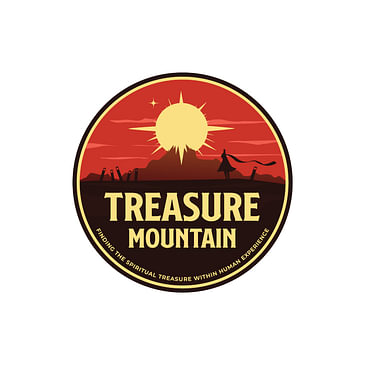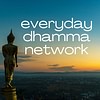
Treasure Mountain Podcast
Finding the spiritual treasure within human experience
Treasure Mountain is a podcast channel aimed at people interested in spiritual development from a Buddhist perspective. Most of the guests are practising Buddhists with many years (even many decades) of experience. Part of the aim of Treasure Mountain is to encourage Buddhists everywhere in the English-speaking world to look beyond the confines of their local Buddhist group and see that there is a renaissance in Buddhist practice and culture occurring at a global level, and that there are many inspiring teachers and community leaders across many countries adapting to 21st century life whilst trying to stay true to the origins of Buddha’s teaching. Treasure Mountain also seeks to raise awareness about some of the lesser known but dedicated teachers and community leaders and their worthy projects, and to provide listeners with an opportunity to give to these causes.
Reviews:
Vipassana Meditation: an introduction to insight meditation practice | Patrick Kearney
In some recent episodes of Treasure Mountain Podcast we’ve heard about the importance of samatha - or stillness, tranquillity - meditation. But what about vipassana - insight meditation? The vipassana meditation movement has had a huge impact upon meditation practice in both East and West, and has s...
Buddhism vs Psychotherapy | Ayya Jitindriya
In Western culture over the past century, the growth of interest in psychology and Buddhism have occurred together and have often intersected. Yet they come from quite different views of the world and the nature of the mind. What is the relationship between Buddhism and psychotherapy in the modern w...
Silent Meditation Retreats: A Journey of Self-Discovery & Inner Peace | Shaila Catherine
Have you learned the basics of meditation and wanted to take things deeper? Have you heard about silent meditation retreats and wondered what they are like? If so, you’ve arrived at the right place as in this episode we are going to discuss why we should go on meditation retreats, with a focus on th...
Samatha: developing calm and tranquillity in meditation | Prof. Peter Harvey
In this episode of Treasure Mountain we will explore the purpose and nature of samatha meditation, and it’s relation to other forms of meditation - notably vipassana meditation - and to the Buddhist path as a whole. And our guest to help us have a deeper appreciation of samatha meditation is Profess...
Creating Strong, Supportive Buddhist Communities – NeeWern Khoo
In this episode I wanted to talk about the importance of community when it comes to both finding the Path of Practice, but also in terms of having the support to stick with it and to grow with it. I’ve been practicing Buddhism for thirty years and I have a lot of contacts in Western … Continue...
Following the Path of a Forest Monk | Ajahn Pasanno
Joining us on this episode is a humble, yet trail-blazing monk from the forest tradition lineage of Ajahn Chah who is now the senior most bhikkhu at Abhayagiri Forest Monastery in California. I’m speaking of course of the Venerable Ajahn Pasanno. Ajahn Pasanno took ordination in Thailand in 1974 wit...
The Life and Legacy of Master Hsing Yun | Venerable Juefang
This episode is about the late, great Master Hsying Yun, a true dynamo of a monk, dedicated to the spreading of the teachings and practice of Buddhism in Taiwan, China and around the world. Master Hsing Yun has achieved so much in his lifetime that it is virtually impossible to relate but a small pa...
Finding Peace Amidst War: A Ukrainian Monk’s Story | Bhante Thithidhammo
Joining us on this episode is a humble monk who was quietly practicing meditation in northern Thailand until he returned to his native Ukraine just three months before the Russian invasion in February 2022. Bhante Thithidhammo was born in the former Soviet Union in 1971. He was a reserved child who ...
The Saintmaker: The Meaning and Purpose of the Sangha | with Ajahn Kovilo
Joining us on this episode is a return guest, Ajahn Kovilo who is joining us from Dharma Realm Buddhist University in California. Ajahn Kovilo is an Ohio-born monk who, having been introduced to meditation through the Goenka tradition, first entered the monastery in 2006. After receiving full ordina...
Rainbodhi: Supporting the LGBTQIA+ Buddhist Community | Bhante Akaliko
Our return guest today on Treasure Mountain Podcast is Bhante Akaliko who is an Australian monk in the Theravada forest tradition. He is the spiritual director of Little Dust and founder of the Rainbodhi LGBTQIA+ Buddhist Community. Bhante Akāliko is also the spiritual advisor of Central West Buddhi...










